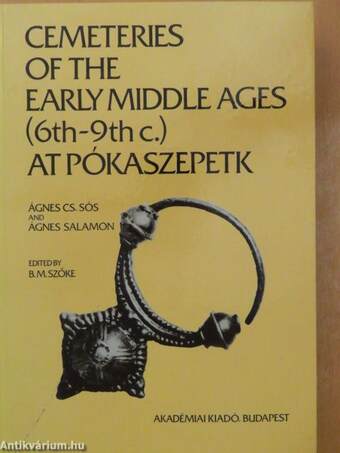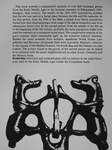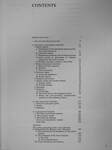1.035.018
kiadvánnyal nyújtjuk Magyarország legnagyobb antikvár könyv-kínálatát

VISSZA
A TETEJÉRE
JAVASLATOKÉszre-
vételek
Cemeteries of the Early Middle Ages (6th-9th Centuries A.D.) at Pókaszepetk
| Kiadó: | Akadémiai Kiadó |
|---|---|
| Kiadás helye: | Budapest |
| Kiadás éve: | |
| Kötés típusa: | Fűzött kemény papírkötés |
| Oldalszám: | 420 oldal |
| Sorozatcím: | |
| Kötetszám: | |
| Nyelv: | Angol |
| Méret: | 29 cm x 21 cm |
| ISBN: | 963-05-6759-8 |
| Megjegyzés: | Fekete-fehér fotókkal, illusztrációkkal. |
naponta értesítjük a beérkező friss
kiadványokról
naponta értesítjük a beérkező friss
kiadványokról
Előszó
TovábbFülszöveg
This book presents a comparative analysis of over half thousand graves from the Early Middle Ages at the bi-ritual cemetery of Pokaszepetk (SW-Hungary, Zala county). The results of the 1951-1971 excavations revealed that the site was used as a burial place between the 6th and 9th centuries. In the first period, from the 580s to the 680s, a mixed Avar-Slavic population buried here their dead applying a wide range of the Slavic cremation and Avar inhumation burial rites. In the second period, from the middle of the 8th up to the beginning of the 9th century, probably the same population might have used the cemetery as a cremation burial place. The comparative analysis of the grave remains sheds remarkable light on the extensive cultural relations. Besides the usual nomadic-Avar artifacts, significant North Italian Lan-gobardic and Bavarian-Alemannic finds were recovered. Similarly, relations to the regions of the Middle Dniester, the South Bug and the Dnieper are also evident. The... Tovább
Fülszöveg
This book presents a comparative analysis of over half thousand graves from the Early Middle Ages at the bi-ritual cemetery of Pokaszepetk (SW-Hungary, Zala county). The results of the 1951-1971 excavations revealed that the site was used as a burial place between the 6th and 9th centuries. In the first period, from the 580s to the 680s, a mixed Avar-Slavic population buried here their dead applying a wide range of the Slavic cremation and Avar inhumation burial rites. In the second period, from the middle of the 8th up to the beginning of the 9th century, probably the same population might have used the cemetery as a cremation burial place. The comparative analysis of the grave remains sheds remarkable light on the extensive cultural relations. Besides the usual nomadic-Avar artifacts, significant North Italian Lan-gobardic and Bavarian-Alemannic finds were recovered. Similarly, relations to the regions of the Middle Dniester, the South Bug and the Dnieper are also evident. The pottery found in the graves of the second period can be linked to to relations with the closer neighbourhood, in other words, Dalmatia and the Morava basin.
Readership: historians and archaeologists with an interest in the wider European links in the Early Middle Ages within the Carpathian basin. Vissza
Témakörök
- Idegennyelv > Idegennyelvű könyvek > Angol > Művelődéstörténet
- Idegennyelv > Idegennyelvű könyvek > Angol > Történelem > Európa története > Egyéb
- Művelődéstörténet > Civilizációtörténet > Európai
- Művelődéstörténet > Kultúra > Kultúrantropológia
- Történelem > Idegennyelvű > Angol
- Régészet > Általános régészet, antropológia > Középkor
- Régészet > Kontinensek szerint > Európa > Kárpát-medence, Magyarország
- Idegennyelv > Idegennyelvű könyvek > Angol > Régészet > Általános régészet, antropológia > Középkor
- Idegennyelv > Idegennyelvű könyvek > Angol > Régészet > Kontinensek szerint > Európa
- Történelem > Középkor > Kora-középkor (5-10. sz.)
- Történelem > Tanulmányok
- Történelem > Kontinensek szerint > Európa, európai országok története > Közép-Európa > Egyéb
- Történelem > Régészet > Általános régészet, antropológia > Középkor
- Történelem > Régészet > Kontinensek szerint > Európa > Kárpát-medence, Magyarország
Megvásárolható példányok
Nincs megvásárolható példány
A könyv összes megrendelhető példánya elfogyott. Ha kívánja, előjegyezheti a könyvet, és amint a könyv egy újabb példánya elérhető lesz, értesítjük.










